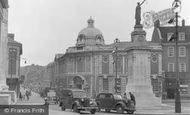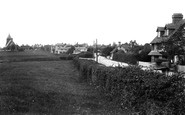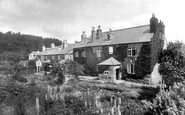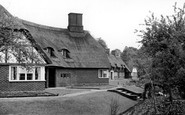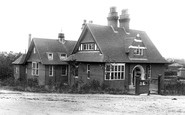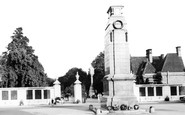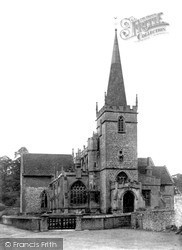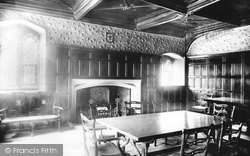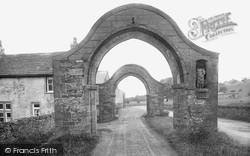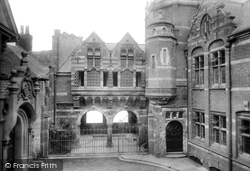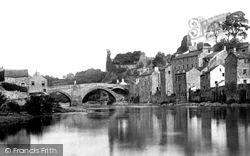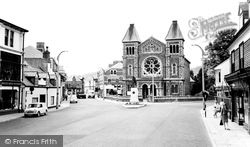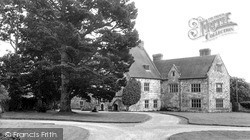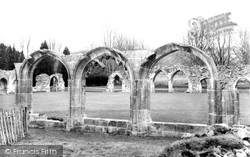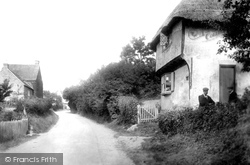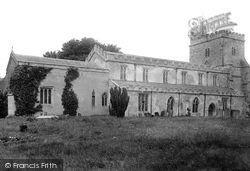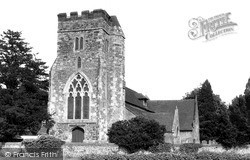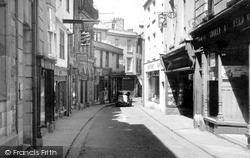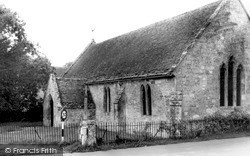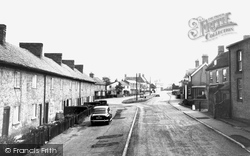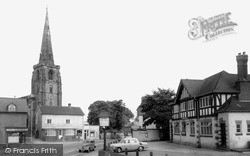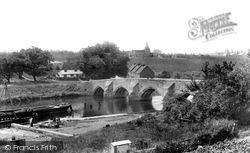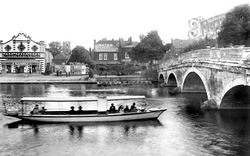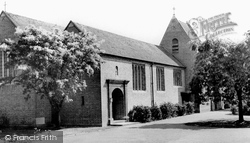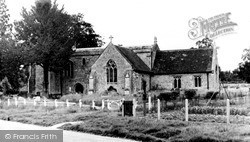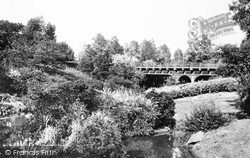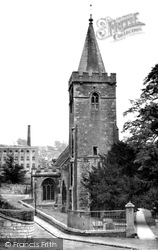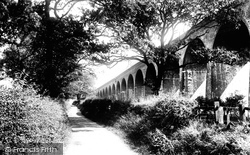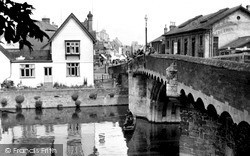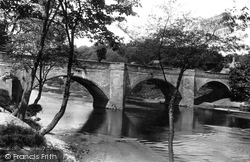Places
Sorry, no places were found that related to your search.
Photos
5 photos found. Showing results 521 to 5.
Maps
83 maps found.
Books
Sorry, no books were found that related to your search.
Memories
1,128 memories found. Showing results 261 to 270.
Ddol Terace
Hello. This is not so much a memory as a request. After the war my dad and mum moved to Cwm Penmachno from Liverpool with my younger sister and myself. I was four and a half years old. My dad had a job driving a motor car for a ...Read more
A memory of Penmachno in 1951 by
The Old Days In Solford
I started life in Berrie Street off Ellor Street in Salford, the houses then were all terraced with back entries at the back of Saint Paul's chuch. The first school I remember going to was John Street then the following: ...Read more
A memory of Salford in 1860 by
When I Was 5
I remember getting off a bus in Upper George Street with my dad and walking down towards George Street and I saw the library and said what's that pointing - my dad said "It's a library and you borrow books from there". I was amazed and ...Read more
A memory of Luton in 1957 by
Evacuated To Burwash 1936/37
We were twin sisters, Audrey and Yvonne Long. We were evacuated to Burwash, I only have a photo of us sitting in a field somewhere with more young children of our age, and some younger. I have no memories of the ...Read more
A memory of Ticehurst in 1930 by
The Time Of My Life
Hi ! My name is Martine and I am French. I came to New Marske by chance when I started to study English and I staid with the Alexanders and their three children, Jean, John and Moira. I had a great time with them and I ...Read more
A memory of New Marske in 1965 by
Bovey Tracey
I was born in Bovey at what is now the Old Library in East Street, but in 1937 was the Liberal Club. My Godfather Dick Smaridge lived just down the street at Number 14. After his son Eric was shot down in the War I mostly lived ...Read more
A memory of Haytor Vale in 1954 by
Freefolk Priors
I have fond memories of Freefolk. I stayed at Freefolk Priors with my Aunt Babs and her three boys around about 1963. We would go down there for the duration of the school holidays and stay in her little house which overlooked the ...Read more
A memory of Freefolk in 1963 by
My Link To Cherry Willingham
I feel connected through family,whom I have never met. My plan to visit and connect in person will depend on whether I can trace my relative. Does anyone recall Stan (Clark?) and his daughter Linda? Linda's ...Read more
A memory of Cherry Willingham by
Boil's Adenoids And Tonsils
My overriding memory of "The Aldershot Cottage Hospital"was of blind panic and fear, and of a day in 1946 aged six years old I was taken to what must have been the out-patients department to have a very large ...Read more
A memory of Aldershot in 1946 by
“Play Up, Play Up, And Play The Game!”
My memory bank has been activated by the contributed items about Hugh Bell Central School, though my recollections of Hugh Bell are older than those published on this website. My years at Hugh Bell were 1938 ...Read more
A memory of Middlesbrough in 1940 by
Captions
1,233 captions found. Showing results 625 to 648.
Its arches to north, south and east are very tall too, and of Decorated style.
Today, the college is still a vibrant place of learning, and open to a much wider range of pupils than Humphrey Chetham ever dreamed of.
These arches can be seen when approaching Sawley (or 'Sally') Abbey. Built in about 1890, one of them had to be removed years later because it obstructed the highway.
The shot is seawards (centre), through the arches, from the Guildhall (left).
The Gothic-arched County Bridge straddles what was the old border between Yorkshire and the Palatinate of Durham.
Behind the mini-van on the left, the Butchers Arms had replaced a much older half- timbered building damaged extensively by fire in 1939.
The priory was dissolved by Henry VIII in 1537 and the church was demolished, but much of the priory was incorporated in the Tudor mansion we see in this view from near the gatehouse.
These ruined windows and arches are the remains of the cloisters. Situated in the north-west Cotswolds, Hailes Abbey was founded in 1246.
The 19th-century squire, Sir Edward Cholmeley Dering, had every window in the village altered to have rounded lights under an exterior arch in the belief that this would bring good luck.
Inside, the nave south arcade is partly late 12th-century and of high quality, and so are the rest of the nave arches, which are early 14th-century.
Internally, the church shows its Norman origins with two-bay arcades north and south and unmoulded arches separated by pieces of wall.
Opposite the arches and pillars of what used to be Hayman's Pianoforte Warehouse are just visible; the premises are now a gun shop.
The tiny nave and chancel have no arch; the plaster ceiling probably dates to the early 19th century. A bell from the time of the church's completion is kept on a window-sill.
right) is now a private house; the next building has been demolished, but Chequers House, in the foreground, has been restored, and today sports fine wrought iron railings and a splendid iron gate arch
The church is built of a grey sandstone; the scraping of the interior has left it somewhat dull, but relieved by the royal arms dated 1684 above the chancel arch.
This peaceful scene shows the 14th-century five-arched ragstone bridge, which is considered by some to be the finest in the south-east.
This view looks across the river to the south bank, now a much changed view. The Picturedome at this time was showing 'Madame Peacock' daily at 3, 7 and 9 o'clock.
Particularly pleasant is the Tuscan-columned interior, with its round arches under a wagon roof.
The nave is mainly 12th-century, while the 14th-century south chapel has an external arched tomb recess under its three-light window (centre).
The cast iron rustic bridge, built in 1870, has always been a much-photographed spot.
There are also memorials to Anne Long, 1601, in brass, and to Charles Steward, 1701: a standing figure (by Nost) is in front of a blank arch, with mourning putti left and right.
Here we have a grand view of the railway arches heading out of Whalley.
Apart from the need for something stronger, it was believed that the small arches restricted the flow of the Ouse and led to the formation of ice during the winter.
This sturdy bridge over the River Wharfe, linking Boston Spa with Thorp Arch, was built in 1770. Along the banks to the east is the old Spa Baths, now converted to housing.
Places (0)
Photos (5)
Memories (1128)
Books (0)
Maps (83)

